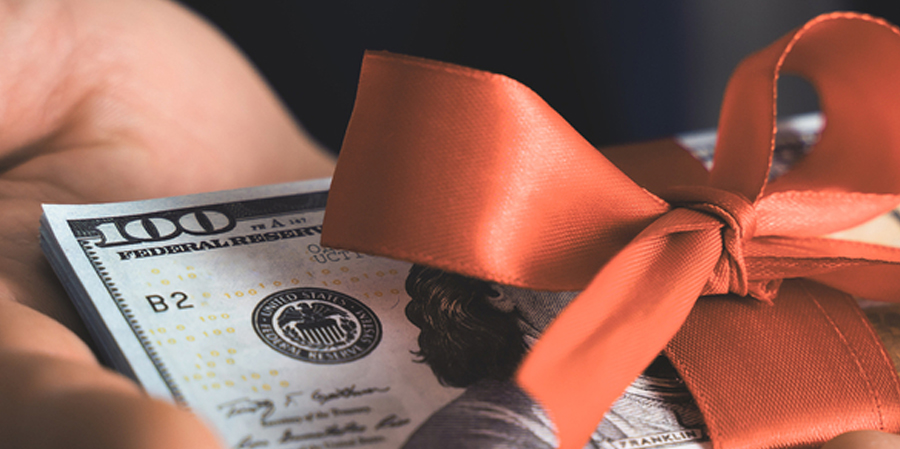Thousands of loyalty programs exist today across all types of industries. In the travel and leisure vertical alone, it’s estimated that over 90% of companies have a loyalty program in place. These loyalty programs come in all shapes and sizes, with variations in how users earn rewards, plus how and where they can put those rewards to work. A key differentiator among these programs lies in how the customer is ultimately rewarded, whether it is through cash incentives or alternate currencies such as points or miles.
In a recent survey of e-commerce consumers Wildfire Systems conducted, the findings concluded that nearly 77% of respondents prefer cash over any other form of incentive.
Changes in the travel industry heavily influenced the preference for cash. Recently, some of the largest players in the space, such as United’s MileagePlus program, significantly devalued their points. In 2020, points inflation hit the airline industry, and flights that previously cost, for example, 60,000 points went up to 130,000 points. This year, airlines across the board also announced dynamic pricing for rewards members, further devaluing points and introducing uncertainty for members around the value of their accrued points. Similarly, Marriott Bonvoy will introduce a new dynamic pricing system in 2022. By the end of the year, the pricing for nights paid by points will have no cap, so prices will be even more unpredictable, and likely less favorable for the customer.
Against this backdrop, we layer in overall customer expectations for rewards programs. Today’s consumers expect convenience as a core part of any experience with a brand. For example, even though stores have reopened, customers continue to lean into the convenience of buying online.
Related: Gaining Lift from the Consumer Shift
Further, Merkle’s 2021 Loyalty Barometer Report indicated that when it comes to rewards, customers consider utility to be paramount. What’s more of a utility than cash customers can spend anywhere?
Finally, price inflation in general is influencing customer preferences. Recently, American Banker noted that cashback rewards are even more popular now due to inflation’s uptick. “…Americans look for immediate ways to offset rising costs, instead of saving loyalty points for future indulgences.”
What does this all mean for marketers? Taking convenience into consideration, customer flexibility, and the option to choose exactly how they want to spend their rewards redemptions, plays to the strength of cash as a loyalty program currency.
Cash is the ultimate flexible redemption option and helps brands meet the customer where they are. With cash, brands don’t necessarily bind them to a proprietary reward currency that may not provide them the same value and freedom that cash does. One of our survey respondents said it best: they prefer it because, “I get cash back to use for other purposes.”
While the customer convenience of cash as a loyalty program reward is important, giving cashback doesn’t just benefit the customer at the time of redemption. Cashback benefits the merchant, too. It can serve as a driver of higher conversion rate and increased order value, when introduced at the beginning of a shopping journey.
Here’s how: when a potential customer activates a cashback reward, the psychological effect of that activation acts like a magnet to draw the customer through to the completed sale so that they can realize the cashback they activated.
At Wildfire, we have seen this effect in our own data. The global average e-commerce conversion rate, from a website visit to a purchase, is approximately 1.8%. However, when consumers activate cashback rewards, over 15% of them complete the transaction.
The impact of the cashback activation is also seen in increased average order value (AOV). Customers think, “if I’m getting a deal, I should buy more.” To this end, cashback is seen as a value-add in the customer’s mind (e.g., getting some sort of bonus just for spending the same amount). Wildfire’s data indicates that consumers who complete purchases after activating a cashback offer have 81% higher order value compared to the average order value purchased by consumers who originate from Facebook or Pinterest.
As loyalty programs become table stakes for many businesses, cash as a loyalty program reward can be a key driver both for businesses to gain benefits in the form of improved conversion rates and increased average order value. Customers also win because of their positive experience with a convenient and flexible redemption option that they value highly.
…
This article first appeared in www.cmocouncil.org
Seeking to build and grow your brand using the force of consumer insight, strategic foresight, creative disruption and technology prowess? Talk to us at +971 50 6254340 or mail: engage@groupisd.com or visit www.groupisd.com/story




